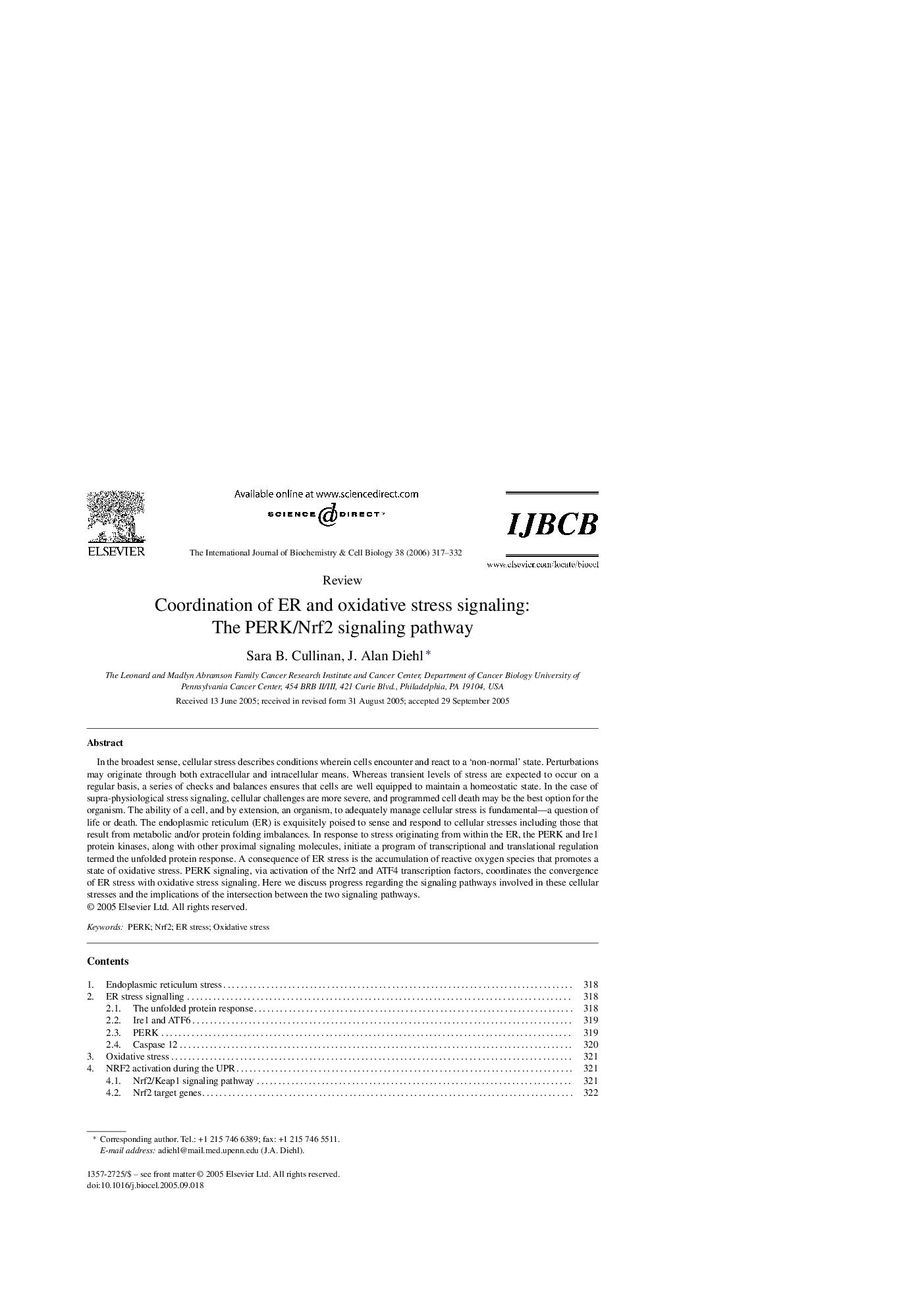| کد مقاله | کد نشریه | سال انتشار | مقاله انگلیسی | نسخه تمام متن |
|---|---|---|---|---|
| 1984839 | 1539988 | 2006 | 16 صفحه PDF | دانلود رایگان |

In the broadest sense, cellular stress describes conditions wherein cells encounter and react to a ‘non-normal’ state. Perturbations may originate through both extracellular and intracellular means. Whereas transient levels of stress are expected to occur on a regular basis, a series of checks and balances ensures that cells are well equipped to maintain a homeostatic state. In the case of supra-physiological stress signaling, cellular challenges are more severe, and programmed cell death may be the best option for the organism. The ability of a cell, and by extension, an organism, to adequately manage cellular stress is fundamental—a question of life or death. The endoplasmic reticulum (ER) is exquisitely poised to sense and respond to cellular stresses including those that result from metabolic and/or protein folding imbalances. In response to stress originating from within the ER, the PERK and Ire1 protein kinases, along with other proximal signaling molecules, initiate a program of transcriptional and translational regulation termed the unfolded protein response. A consequence of ER stress is the accumulation of reactive oxygen species that promotes a state of oxidative stress. PERK signaling, via activation of the Nrf2 and ATF4 transcription factors, coordinates the convergence of ER stress with oxidative stress signaling. Here we discuss progress regarding the signaling pathways involved in these cellular stresses and the implications of the intersection between the two signaling pathways.
Journal: The International Journal of Biochemistry & Cell Biology - Volume 38, Issue 3, March 2006, Pages 317–332